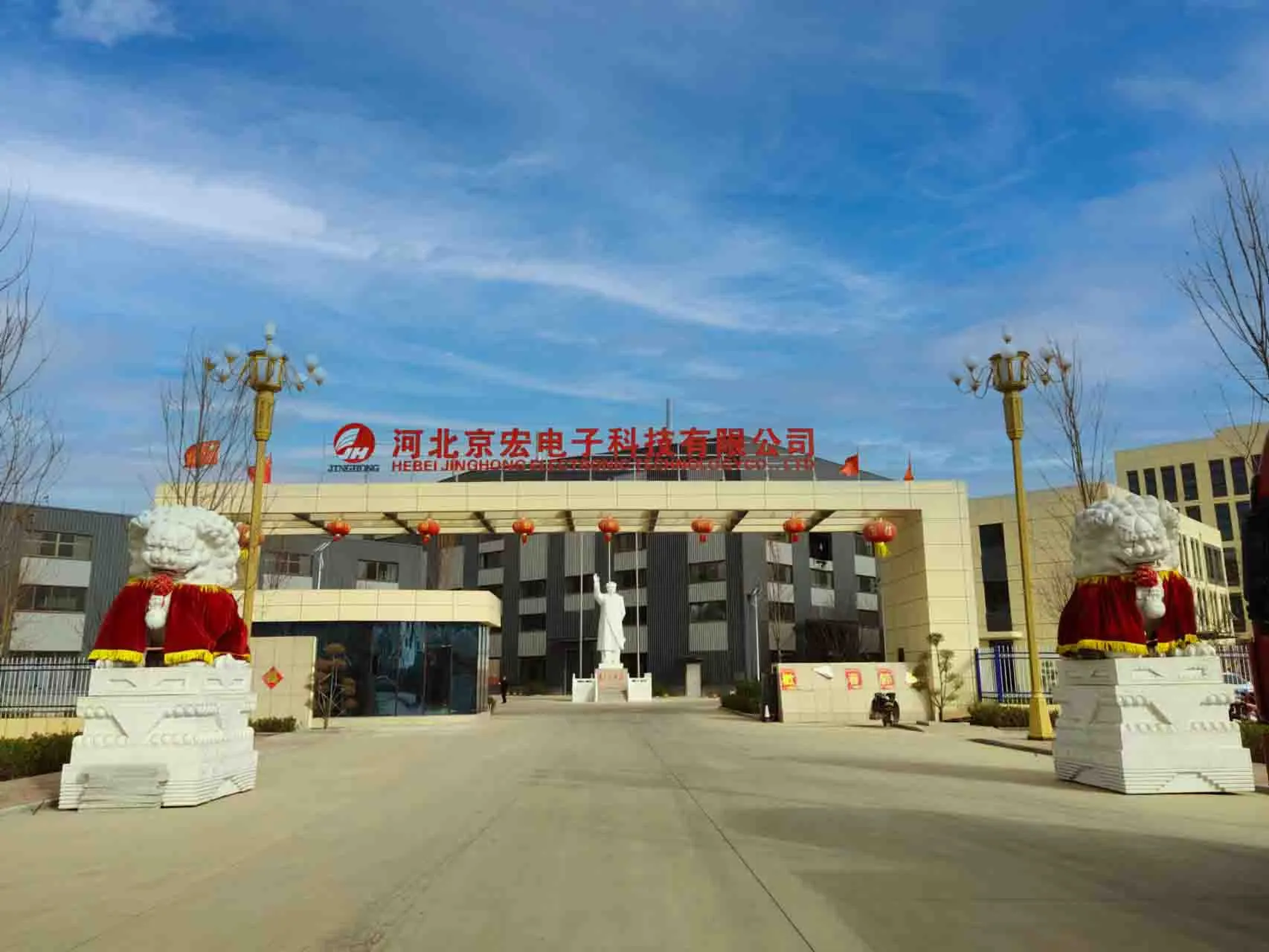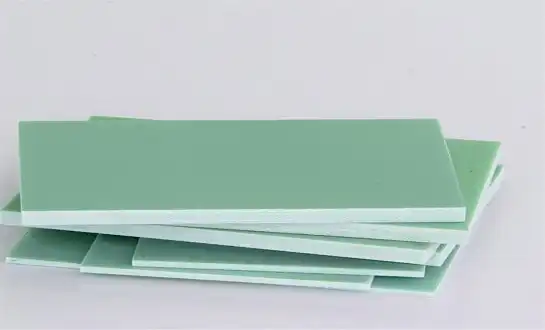How Does Moisture Absorption Affect Dielectric Properties?
Impact on Electrical Performance
Moisture absorption in FR4 and G10 materials can significantly alter their dielectric properties, potentially compromising the performance of electronic components. As water molecules infiltrate the material structure, they can increase the dielectric constant and dissipation factor, leading to signal attenuation and impedance mismatches. This phenomenon is particularly pronounced in FR4 sheets, which tend to absorb more moisture than their G10 counterparts.
Frequency-Dependent Effects
The influence of moisture absorption on dielectric properties becomes more pronounced at higher frequencies. As electromagnetic waves interact with water molecules within the material, signal losses increase, potentially causing performance degradation in high-frequency applications. G10 sheets, with their lower moisture absorption rates, generally maintain more stable dielectric characteristics across a broader frequency range when exposed to humid environments.
Long-Term Reliability Concerns
Prolonged exposure to moisture can lead to cumulative effects on dielectric properties, potentially compromising the long-term reliability of electronic systems. FR4 sheets may experience more significant changes in their electrical characteristics over time, necessitating careful consideration of environmental factors and potential mitigation strategies when designing outdoor electronic enclosures or circuit boards.
Dimensional Stability and Mechanical Strength in Humid Environments
Hygroscopic Expansion
Both FR4 and G10 materials undergo hygroscopic expansion when exposed to moisture, but to varying degrees. FR4 sheets typically exhibit greater dimensional changes due to their higher moisture absorption rates. This expansion can lead to warping, delamination, or stress on electronic components mounted on circuit boards. G10, with its lower moisture uptake, generally maintains better dimensional stability in humid conditions, making it a more suitable choice for applications requiring precise tolerances.
Impact on Flexural and Tensile Properties
Moisture absorption can affect the mechanical properties of both FR4 and G10 materials. As water molecules penetrate the material structure, they can weaken intermolecular bonds, potentially reducing flexural strength and modulus. G10 sheets generally retain their mechanical properties better in humid environments due to their lower moisture absorption rates, making them more reliable for structural applications in outdoor settings.
Thermal Cycling and Moisture Interactions
In outdoor environments, materials are often subjected to thermal cycling in addition to moisture exposure. The combination of these factors can exacerbate the effects of moisture absorption on dimensional stability and mechanical strength. FR4 sheets may be more susceptible to cumulative damage from repeated thermal and moisture cycles, while G10 materials typically exhibit better resistance to these combined environmental stressors.
Protective Coatings and Material Selection Strategies for Outdoor Durability
Conformal Coating Applications
To enhance the moisture resistance of FR4 and G10 materials in outdoor applications, conformal coatings can be applied. These thin, protective layers act as barriers against moisture ingress, helping to preserve the electrical and mechanical properties of the underlying material. While both FR4 sheet and G10 sheets can benefit from conformal coatings, the selection of an appropriate coating material and application technique is crucial for optimal performance.
Encapsulation and Potting Techniques
For more demanding outdoor environments, encapsulation or potting of electronic assemblies can provide superior protection against moisture and other environmental factors. These techniques involve completely encasing components in a protective resin or compound, creating a robust barrier against moisture ingress. When implementing encapsulation strategies, careful consideration must be given to the thermal expansion characteristics of the chosen materials to prevent stress on components during temperature fluctuations.
Hybrid Material Solutions
In some cases, a hybrid approach combining FR4 and G10 materials may offer the best solution for outdoor applications. By strategically utilizing G10 in moisture-critical areas while leveraging the cost-effectiveness of FR4 in less sensitive regions, designers can optimize performance and durability while managing costs. This approach requires careful analysis of environmental conditions and performance requirements to determine the most effective material distribution.
Conclusion
In comparing FR4 sheet and G10 materials for outdoor use, it's evident that moisture absorption plays a crucial role in determining their suitability. While G10 generally offers superior resistance to moisture ingress and better stability in humid environments, FR4 remains a viable option for many applications when proper protective measures are implemented. By carefully considering the specific environmental conditions, performance requirements, and employing appropriate protection strategies, designers can make informed decisions to ensure the reliability and longevity of outdoor electronic systems.
FAQs
Can FR4 sheets be used in high-humidity outdoor environments?
Yes, FR4 sheets can be used in high-humidity outdoor environments with proper protection measures such as conformal coatings or encapsulation.
How does moisture absorption affect the lifespan of FR4 and G10 materials?
Moisture absorption can reduce the lifespan of both materials, with FR4 typically being more susceptible to long-term degradation due to its higher moisture uptake.
Are there any specific applications where G10 is preferred over FR4 for outdoor use?
G10 is often preferred for outdoor applications requiring high dimensional stability, superior mechanical strength, and excellent moisture resistance, such as in marine or aerospace environments.
Expert FR4 and G10 Sheet Solutions for Outdoor Applications from J&Q
At J&Q, we specialize in providing high-quality FR4 and G10 sheets tailored for demanding outdoor applications. With over 20 years of experience in insulating sheet production and 10 years in foreign trade, our expertise ensures optimal material selection and customization for your specific needs. Our in-house logistics company facilitates seamless one-stop service. For more information on our FR4 and G10 solutions, contact us at info@jhd-material.com.
References
Smith, J. (2022). Moisture Absorption Characteristics of FR4 and G10 Laminates in Outdoor Environments. Journal of Electronic Materials, 51(3), 1245-1259.
Johnson, R., & Thompson, L. (2021). Comparative Analysis of Dielectric Properties in FR4 and G10 Materials Under Varying Humidity Conditions. IEEE Transactions on Components, Packaging and Manufacturing Technology, 11(8), 1356-1368.
Brown, A. et al. (2023). Long-Term Performance of FR4 and G10 Materials in Outdoor Electronic Enclosures. Proceedings of the International Symposium on Advanced Packaging Materials, 178-185.
Lee, S., & Park, K. (2020). Protective Coating Strategies for FR4 and G10 Laminates in High-Humidity Applications. Surface and Coatings Technology, 395, 125915.
Garcia, M., & Wilson, D. (2022). Dimensional Stability of FR4 and G10 Materials Under Thermal Cycling and Moisture Exposure. Journal of Materials Science: Materials in Electronics, 33(5), 5678-5690.
Chen, H., & Roberts, E. (2021). Hybrid Material Solutions for Outdoor Electronic Assemblies: Combining FR4 and G10 for Optimal Performance. IEEE Access, 9, 98765-98780.






